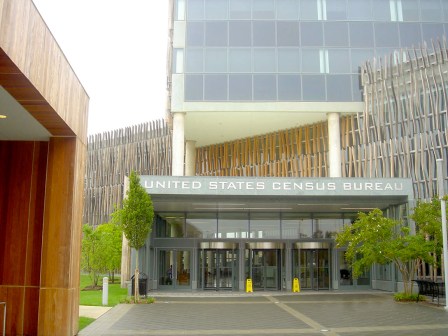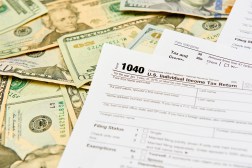Census Bureau makes substantial updates to COVID-19 data hub

The Census Bureau has made substantial updates to its interactive COVID-19 data hub to help better represent the evolving pandemic’s effects on communities and businesses.
Version 2.1 launched this week with new data from the bureau’s County Business Patterns (CBP) data series on payrolls and employment, as well as its latest Non-Employer Statistics, which cover businesses that have no employees.
Those sets and others are geared toward improving how the COVID-19 hub tracks vaccine distribution, said Andrew Hait, an economist with the Census Bureau, during an event Thursday. Employment data is an important piece of the puzzle, he said.
“We know that some additional statistics might be useful to help understand the distribution of vaccines across the nation,” Hait said. “For example, we know already that … occupation is likely going to play a role in sending out vaccines to Americans.”
Various Census Bureau surveys already gather data related to the spread of COVID-19. Like other federal agencies interested in the response to the pandemic, the bureau is entering a new phase of data collection and analysis as vaccine distribution ramps up nationwide.
The bureau recognized at the pandemic’s outset that it needed new programs to measure the coronavirus’ impact and began by reorienting its Business Formation Statistics (BFS), launched in 2018, around pandemic data. New business formations declined at the start of the pandemic but began to rebound in the second half of 2020, Hait said.
BFS data updates are moving from weekly to monthly in January, as the bureau prioritizes more pressing pandemic-related statistics.
The second and third programs with hub dashboards started by the bureau were the weekly Small Business and Household “pulse” surveys gauging the pandemic’s impact on various economic sectors and families, respectively. The former naturally validated the large, negative impact the pandemic has had on the accommodations and food services sector, Hait said.
The Small Business Pulse Survey continues to be revised as the bureau changes its questions to reflect a new stage in pandemic response.
“We started adding new questions that made more sense as the pandemic was evolving,” Hait said. “That will continue to happen as we move forward, so users can make sure that we’re getting data out to you that can help you understand how businesses are not only responding to but hopefully recovering from the pandemic.”
The fourth new bureau program was the Community Resilience Estimates (CRE), which use existing American Community Survey (ACS) data as a baseline to see how states and counties currently fair in 11 risk areas. The fewer risk factors a state or county has, the higher its potential resilience.
CRE is the program most likely to continue after the pandemic ends to estimate resilience with respect to other disasters like hurricanes, Hait said.
The bureau continues to update its hub with the latest data from those four programs, and with its mid-December release of Version 2.0 added data from two new ones: Monthly State Sales Tax Collections and Monthly Retail Sales. Both aspects of the economy have taken a hit during the pandemic and represent new avenues for evaluating its impact.
As for what’s coming, ACS 2019 data will soon be added to the hub, presenting an opportunity for even more variables tied to how different industries and occupations are recovering — provided the pandemic is under control by then, Hait said.






